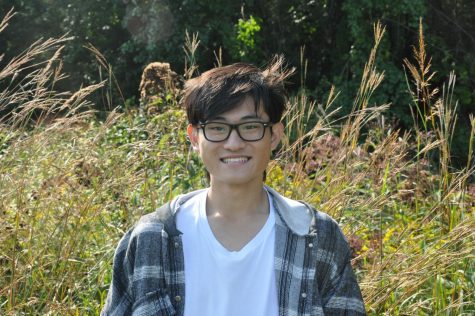Students’ reactions to a full quarter of hybrid learning
Credit: WSPN Staff
With one quarter of hybrid learning finished, students had some differing opinions on how it went. “[Hybrid] is alright,” sophomore Colby Hanson said. “There isn’t much to do to resolve these problems beside wait until the pandemic is over. “
January 5, 2021
With a full quarter of hybrid learning finished as of Nov. 13, students’ opinions on the hybrid learning model are very mixed. Some students feel that the school should go back to an all-remote learning model while others think the current hybrid model is sufficient.
When students aren’t in school two days out of the week, they are at home learning remotely.
“Remote learning was way easier in terms of managing schedules and work,” a junior who would like to stay anonymous and will be referred to as Junior A said. “I find that instead of being taught by teachers in class, students in the remote cohort are having to figure out how to do work themselves.”
To Junior A, the risks of hybrid learning don’t outweigh the benefits, and they feel that because of COVID-19, WHS classes should only be conducted remotely.
“We should either be doing a fully remote [model] or a [fully] in-person, which isn’t an option at the moment, so we should go back to full remote,” Junior A said. “The hybrid model does not work as smoothly as [either a] full remote or full in-person model.”
Although the number of confirmed cases within WHS is relatively low, these are still cases that some find concerning and would prefer to avoid in the future.
“Nobody expected this many kids this early into hybrid [learning] to get COVID-19, and yes, you can contact trace, but that’s not [going to] promise [that] another kid [will not] contract COVID-19,” sophomore Charlotte Dudau said.
To Dudau, the contact tracing system isn’t as reliable as she would like it to be. There’s always the possibility of people getting past the daily survey — a form families have to fill out each morning of school to ensure their child doesn’t have COVID-19 symptoms. Dudau wishes for something more credible.
“Colleges and other schools are testing students, so if [the school] doesn’t plan on taking further action [to] keep students safe, then it’s best just to make it all remote or at least give people an opportunity to move to remote learning if they want to,” Dudau said. “You shouldn’t make a kid go to school if they feel unsafe.”
WHS does offer an all-remote program called WRAP which students can join if they don’t feel safe in hybrid learning, but, to Dudau, this still isn’t enough.
The hybrid learning model has its risks as people are meeting in-person; however, some believe the contact you make with friends and the [privilege] to go outside makes it worth it.
“During hybrid, you can actually go into school and spend time with people in-person, and [in a] remote [setting] you couldn’t do that which was really frustrating, and it [wasn’t] fun being inside the whole day either [attending] classes online,” sophomore Barbara Russell said.
Many students also credit hybrid classes for making learning easier. During the all-remote learning time, junior Akash Bhukhanwala didn’t learn as much content as normal.
“Classes feel so much better in the hybrid model,” Bhukhanwala said. “When I was doing remote learning in March and the beginning of the year, it was honestly really hard to learn. We had Zooms and stuff, but the atmosphere just didn’t fit.”
Even though some students have strong opinions both for and against the hybrid model, many students are taking a more neutral stance on the situation.
“[Hybrid] is alright. There isn’t much to do to resolve these problems besides wait until the pandemic is over,” sophomore Colby Hanlon said.





![Last Wednesday, the Wayland School Committee gathered to discuss a number of topics regarding the health curriculum and Innovation Career Pathway course. Another large topic of conversation was the ways to potentially mitigate distracting cell phone usage. "These [phones] are going to distract your learning and social relationships," Superintendent David Fleishman said. "That's concrete right there."](https://waylandstudentpress.com/wp-content/uploads/2025/06/Screenshot-2025-06-04-at-9.49.31 PM-1200x886.png)



























![Troy Hoyt finishes the Boston Marathon, running for the Hoyt Foundation. T. Hoyt is the son of Hoyt Foundation CEO Russ Hoyt.
“[Running a marathon] might seem like a big thing, when it’s presented to you at first, but if you break it up and just keep telling yourself, “Yes, you can,” you can start chipping away at it. And before you know it, you’ll be running the whole 26 miles, and you won’t even think twice about it.” T. Hoyt said.](https://waylandstudentpress.com/wp-content/uploads/2025/04/C36E8761-1CBB-452E-9DF2-543EF7B1095E_1_105_c.jpeg)











































![With one quarter of hybrid learning finished, students had some differing opinions on how it went. "[Hybrid] is alright," sophomore Colby Hanson said. "There isn't much to do to resolve these problems beside wait until the pandemic is over. "](https://waylandstudentpress.com/wp-content/uploads/2020/12/nMARvfdbCjthodfEnubGfFMPcBXF8NOcsqXPX7lr-900x600.jpeg)


